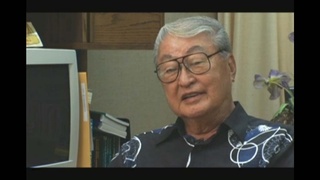Interviews
Creating a registry to study the outcome of transplants
We studied the outcome of transplants, and we wanted to know if we matched the people, what would be the outcome if they mismatched the person’s [race]. And also, if they mismatched for one type and another type for another type, does it make a difference? So out of that, we needed to get data. We needed to find out what happened after transplant. So we created this registry, 1970, and it still exists today1.
The registry is to collect the data of the patients, the transplant patients, after being transplanted and to see how they are. So every year we would ask them, ask the center, how the patient was doing. And from this, then, we could look at different factors—as you mentioned, race of the donor. For example, the size of the donor, we found that if the donor’s too small, kidney’s too small, then it puts an extra stress on the kidney and the kidney doesn’t last as long as a larger kidney. Also, if the kidney is from an old person, a lot of the nephrons2 are damaged. So when you put the kidney in, it doesn’t work as well. So all of these different factors that we’ve looked for. Sometimes, the Black patients, there’s a lower graft level. And we don’t know exactly what that has to do. Some of it might be socio-economic conditions, but others might be inherent—strong immune response that was able to react against the kidney. So, it’s been sort of a gold mine.
We’ve had the registry at UCLA. And then subsequently, the government set up what’s called the UNOS Registry. And from 1987 to 1999, we had the UNOS Registry. So [we] collected data from every patient. And the UNOS Registry is unusual in the world in that it requires every transplant patient to be registered. There’s no other treatment in medicine that is like this, where from the registry, you can study all these various factors in transplantation. And I think it’s very unique. It’s the only disease related registry and the only one in the world that’s compulsory—means that every transplant that some surgeon, if he does it, has to report it. And also, the government has a way where if he does not report it, he does not get paid. So it’s a very important kind of activity that has been going on the last 20 years.
1. In 1970 Dr. Terasaki was instrumental in the creation of the UCLA Kidney Transplant Registry. Later it evolved into the United Network for Organ Sharing (UNOS) Kidney Transplant Registry.
2. Nephrons are the basic functional units of the Kidney. There are about one million nephrons in each kidney.
Date: February 10, 2004
Location: California, US
Interviewer: Gwenn M. Jensen
Contributed by: Watase Media Arts Center, Japanese American National Museum.




